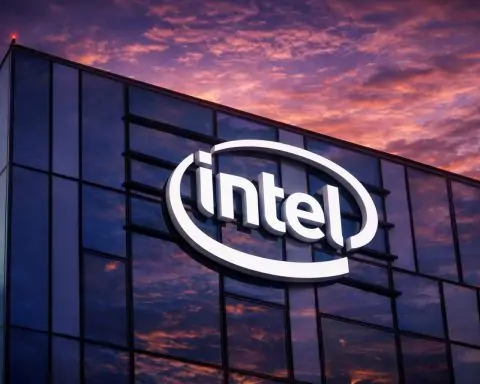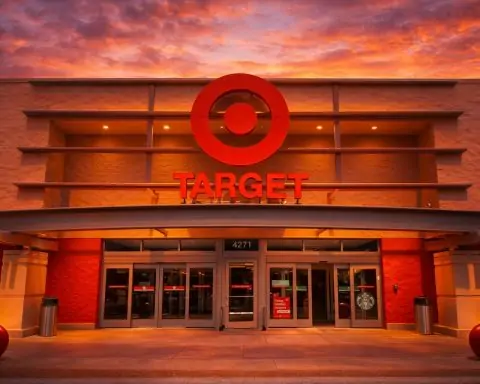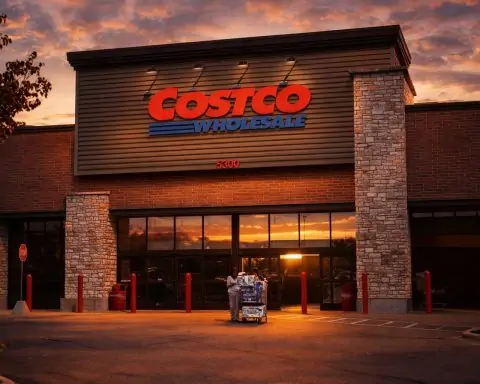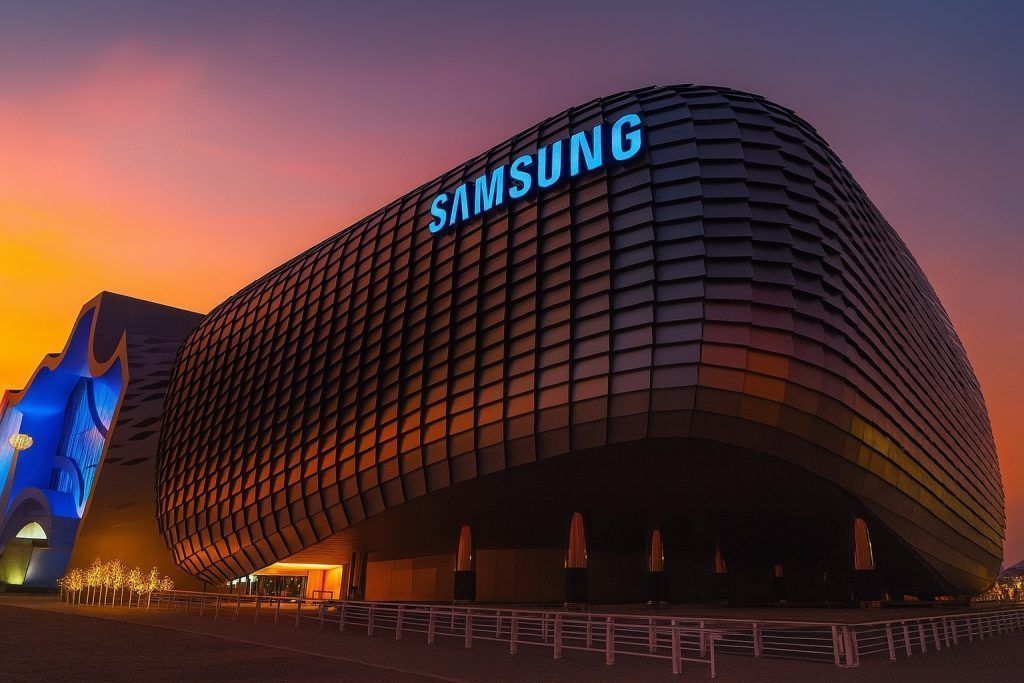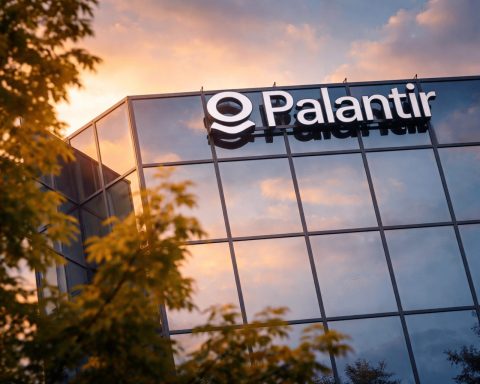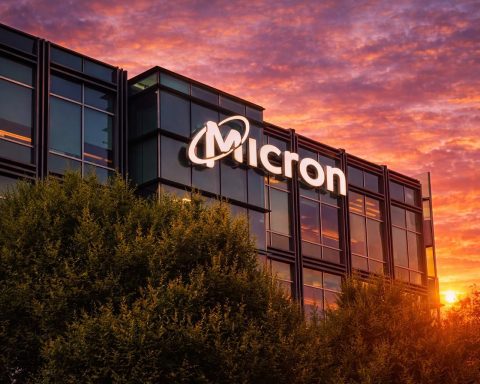- By mid-2023, 99% of German households had access to fixed broadband, and 95.6% were covered by next-generation NGA networks (≥30 Mbps).
- As of the end of 2023, Germany had about 37.0 million fixed broadband lines in service.
- DSL remained the most prevalent technology, but only about 40% of households could get full FTTH/B fiber by late 2023.
- 4G mobile networks cover virtually 100% of the population, while 5G networks cover over 95% as of 2023.
- In rural areas, NGA coverage reached 86.3% of households, Very High Capacity Networks (fiber or DOCSIS 3.1 cable) reached about 57%, and FTTH coverage was 25.6% by mid-2023.
- Deutsche Telekom held roughly 39–40% of retail fixed broadband lines, Vodafone Germany about 28.5%, 1&1 around 11.1%, and Telefónica/O2 about 6.5%.
- Germany’s average fixed broadband speed was 91.4 Mbps in July 2024, with about 2 million gigabit-speed lines (5% of connections) and roughly 1.7 million connections below 10 Mbps.
- The Federal Gigabit Strategy (2022) aims to connect all households to gigabit fiber by 2030, with an interim target of 50% fiber by end-2025 and around €17 billion in funding.
- 5G obligations from the 2019 spectrum auction required 98% population coverage at 100 Mbps by end-2022; by late 2023 Telekom had ~95% 5G coverage and other major operators around 90%.
- From February 2025, providers stopped offering new DSL contracts and are migrating customers to fiber or cable in a staged process aimed to complete by around 2030.
Overview of Germany’s Internet Infrastructure
Germany boasts a well-developed internet infrastructure with widespread availability of broadband and mobile networks. By mid-2023, 99% of German households had access to at least one form of fixed broadband, and about 95.6% had access to “next-generation” high-speed networks (NGA, ≥30 Mbps) [1]. The country historically relied on DSL (digital subscriber line) delivered over copper telephone lines, but in recent years cable broadband, fiber-optic (FTTH/B), and advanced mobile networks have significantly expanded. As of the end of 2023, Germany had approximately 37.0 million fixed broadband lines in service [2]. DSL remains the most prevalent technology, though its share is declining, while cable TV networks (upgraded almost entirely to DOCSIS 3.1 for gigabit speeds) reach about two-thirds of households [3] [4]. Full fiber-optic (FTTH/B) coverage is growing rapidly but still trails other countries (only ~40% of households could get fiber by late 2023) [5]. Meanwhile, Germany’s mobile broadband is highly developed: 4G LTE networks cover virtually 100% of the population, and 5G networks cover over 95% of people as of 2023 [6] [7], ensuring that mobile internet (via smartphones or 4G/5G home routers) is an important connectivity option alongside fixed lines.
In urban areas, consumers often have multiple choices (DSL, cable, fiber, or 5G) for high-speed internet. However, rural regions still face gaps: nearly 97.5% of rural households have basic fixed broadband, but only 86.3% have NGA high-speed coverage in those areas [8]. The German internet backbone and exchange infrastructure is robust, with major Internet Exchange Points (like DE-CIX in Frankfurt) handling some of the world’s highest traffic, contributing to reliable core connectivity. Overall, internet penetration is high – over 93% of German households use the internet, a figure on par with the EU average [9]. The combination of legacy DSL infrastructure and newer fiber/cable networks, supplemented by extensive mobile broadband, defines Germany’s internet landscape as of 2025.
Major ISPs and Market Share
Germany’s broadband market is served by a mix of large nationwide providers and smaller regional players. Deutsche Telekom (the former state monopoly) remains the dominant fixed-line ISP, with roughly 39–40% of retail broadband lines under its direct control [10]. Telekom provides DSL/VDSL across the country and is aggressively rolling out fiber. The second-largest provider is Vodafone Germany, which has about 10.5 million fixed broadband customers (~28.5% market share) [11]. Vodafone’s base is split between the cable networks it acquired (Unitymedia and Kabel Deutschland) and DSL or fiber lines (often via wholesale access). The third is 1&1 (United Internet/Versatel), a competitor that mostly utilizes wholesale DSL/Fiber from Telekom and others; it has around 4.1 million broadband customers (~11.1% share) [12]. Telefónica Germany (O2) is the fourth-largest, with about 2.4 million fixed broadband subscribers (~6.5% share) [13], primarily via DSL resale and some cable/fiber access. Beyond these, the remaining ~15% of the market is split among regional and specialized ISPs – for example, Tele Columbus (PŸUR) operates cable networks in some areas, and regional fiber providers like Deutsche Glasfaser, NetCologne, M-net, and municipal networks serve specific cities or states.
Table: Major Fixed Broadband Providers in Germany (2023)
| Provider | Approx. Subscribers | Market Share |
|---|---|---|
| Deutsche Telekom | ~14.5 million | ~39% [14] |
| Vodafone Germany | 10.5 million [15] | 28.5% [16] |
| 1&1 (Versatel) | 4.1 million [17] | 11.1% [18] |
| Telefónica/O2 | 2.4 million [19] | 6.5% [20] |
| Others (regional ISPs) | ~5 million (combined) | ~15% (combined) |
Mobile broadband is dominated by the three mobile network operators (MNOs): Deutsche Telekom (Telekom Mobilfunk), Vodafone, and Telefónica O2. In the mobile sector, Vodafone and Telekom often vie for the top spot in subscriber numbers (each with ~30–40% share), with O2 slightly behind; however, in terms of revenue Telekom leads with ~38% mobile market share [21]. A new entrant, 1&1 Mobilfunk, began rolling out Germany’s fourth 5G network in 2023, aiming to compete using a combination of its own 5G infrastructure and national roaming agreements [22]. This four-player landscape is expected to increase competition both in mobile and converged (fixed-mobile) service bundles.
Internet Speeds and Reliability
Germany’s internet speeds have improved steadily but still lag behind many other advanced economies. According to Speedtest Global Index data (July 2024), Germany’s average fixed broadband download speed is around 91.4 Mbps, ranking only 60th worldwide [23]. This is notably lower than the speeds in many European peers – for example, France and Denmark average over 230 Mbps, more than double Germany’s rate [24]. The modest average is partly due to Germany’s continued reliance on copper-based DSL lines, which have limited bandwidth especially over long distances. That said, high-speed options are increasingly available: by the end of 2022, about 45% of broadband connections had gigabit-capable or 100+ Mbps service plans, up from 39% a year earlier [25]. Roughly 2 million lines (5% of connections) were gigabit-speed (≥1 Gbps), while about 1.7 million connections (4.5%) were still under 10 Mbps [26] – illustrating the wide range of service quality. In practice, urban customers with cable or fiber can often get 250 Mbps to 1 Gbps plans, whereas rural DSL users might be stuck with 10–50 Mbps if upgrades haven’t reached them.
Reliability of internet service in Germany is generally high. Fixed networks (DSL/cable/fiber) are stable with minimal downtime for most users. Cable broadband can suffer from performance dips at peak times due to shared bandwidth, and DSL speeds are distance-dependent, but overall uptime and service quality are strong by international standards. In fact, network tests show German ISPs deliver consistent performance: in one assessment, Telekom’s fixed network had a ~79.6% “consistent quality” score (for meeting demanding application requirements), topping rivals [27], and all major ISPs achieved high success rates >95% for standard tasks. Fiber-optic connections (though not yet widespread) provide the most reliable high speeds with symmetric performance, and cable DOCSIS 3.1 networks now offer gigabit downloads (with recent upload boosts) [28], though with slightly higher latency than fiber. Mobile broadband speeds have surged with 5G: real-world 5G users often see 100–300 Mbps downloads on Telekom or Vodafone’s network, and latencies around 20–30 ms, making mobile a viable alternative for many. However, Germany’s average mobile download speed (~57 Mbps in 2023) is middle-of-the-pack in Europe, reflecting that 5G is still rolling out and not all users benefit from peak rates.
In summary, while many Germans enjoy fast, reliable internet (especially in cities), the country’s overall speed metrics are held back by uneven technology deployment. The government and industry recognize this shortfall and are pushing major upgrades (discussed below) to boost speeds and consistency nationwide.
Urban vs. Rural: Regional Disparities in Access
Germany faces a persistent digital divide between urban and rural areas in terms of internet access options and quality. Cities and densely populated regions tend to have excellent infrastructure: virtually all urban households can access broadband at 100 Mbps or higher, via cable or VDSL, and increasingly fiber. In contrast, some rural communities – especially in sparsely populated or remote areas – still rely on older technologies or even lack high-speed coverage. By mid-2023, NGA broadband (≥30 Mbps) covered 95.6% of all households but only 86.3% of rural households [29]. The gap is larger for the newest networks: “Very High Capacity Networks” (fiber or Docsis 3.1 cable) reached 75.5% of households overall but only ~57% of rural homes, an 18 percentage-point rural gap [30]. Moreover, fiber-to-the-home coverage in rural Germany was just 25.6% as of mid-2023 [31], far below urban fiber coverage. Many villages still depend on VDSL (often upgraded with vectoring) or fixed wireless/4G for decent service. For example, DSL is available to 94.6% of rural homes (nearly as high as cities) [32], but those lines may deliver only modest speeds if no fiber backbone is nearby.
Regional differences are also evident at the state and county level. Some federal states in northern and eastern Germany have led in fiber rollout – notably Hamburg, Schleswig-Holstein, Brandenburg, Mecklenburg-Vorpommern, and Lower Saxony have the highest fiber coverage rates [33]. In contrast, even certain large cities lag: in Berlin, only 34% of households had access to fiber by late 2024 [34] (due to slow deployment in the capital’s older neighborhoods). At a granular level, of 400 administrative districts in Germany, the majority still have FTTH coverage below 35% and only a handful exceed 95% [35] – often those few are pilot regions or small cities with aggressive fiber projects. Cable broadband (offering hundreds of Mbps) is widely available in towns and suburbs, but many rural villages were never reached by cable TV grids, making them dependent on telecom lines or wireless. This results in situations where a town on one side of a district enjoys gigabit cable, while a village a few kilometers away has only a 4G/LTE router or antiquated DSL at 6 Mbps.
To address these disparities, the government has prioritized subsidized builds in “white spots” (unserved areas), and Telekom and others have used fixed wireless or interim satellite links in some cases to cover gaps. The rural 5G rollout is also notable: thanks to low-band 700 MHz 5G and other measures, about 92.8% of rural households had some form of 5G coverage by mid-2023, much higher than the EU rural average (73.7%) [36]. This means mobile broadband is increasingly a fallback in rural Germany where wired options fall short. Overall, the urban–rural divide is narrowing slowly as fiber and 5G reach the countryside, but significant differences in available speeds and choice persist. A person in Munich or Hamburg can likely choose between a 1 Gbps fiber connection or cable and multiple 5G networks, whereas someone in a small farming village might have a single 16 Mbps DSL line (or a costly satellite service) as their only option. Eliminating these disparities by 2030 is a central goal of Germany’s digital policy.
Government Initiatives and Digital Policies
The German government has launched several initiatives and strategies to improve internet access, upgrade infrastructure, and ensure digital inclusion across the country:
- Federal Gigabit Strategy (Gigabitstrategie 2022): In 2022, Germany unveiled a comprehensive gigabit broadband strategy with the headline goal of connecting all households and businesses to gigabit fiber networks by 2030 [37]. An interim target is to cover 50% of households with fiber by end of 2025, effectively tripling the number of fiber connections from 2021 levels [38]. To support this, the government allocated €17 billion in funding for broadband expansion, focusing on areas that the private sector alone would not cover [39]. The strategy emphasizes cutting red tape for network rollout (e.g. facilitating access to poles and ducts, streamlining permits) and promoting competition and investment in fiber. According to an EY study, Germany is on track to meet or even slightly exceed the 50% fiber coverage by 2025 if current rollout pace continues [40] [41].
- Broadband Funding Programs (Gigabitförderung 2.0): The Ministry of Digital and Transport runs subsidy programs to co-fund network builds in underserved (“grey” and “white”) areas. After an initial nationwide program, Gigabit Funding 2.0 was launched, reserving about €3 billion annually for rural broadband projects [42]. (Funding was temporarily trimmed in 2023 due to high demand, but nearly €2.93 billion is budgeted for 2025 expansions [43].) These grants often go to deployments of fiber in rural communities, frequently executed by smaller fiber specialists or municipal utilities. EU recovery funds and state-level programs also bolster broadband investment in alignment with the EU’s Digital Decade targets (universal 1 Gbps and 5G by 2030) [44].
- Mobile Network Expansion and 5G Obligations: The government and regulator (BNetzA) tied strict coverage obligations to the 2019 5G spectrum auction. Operators were required to achieve 98% population coverage with at least 100 Mbps mobile service by end-2022, cover all federal highways and major roads by 2024, and deploy 1,000 5G sites in “not-spots.” These rules, along with pressure on operators, have driven extensive 4G/5G rollout in rural areas. As a result, by late 2023 Telekom reported 95% 5G coverage and competitors around 90% each [45]. The government also facilitated infrastructure sharing and pushed for rapid allocation of 700 MHz and 3.6 GHz bands to speed up 5G. Auction proceeds were fed into a mobile coverage fund to build new towers in uncovered zones. Additionally, all three 3G networks were shut down by 2022, freeing up frequencies for 4G/5G and signaling a policy shift toward newer technology.
- Digital Policy and Legal Reforms: Germany’s 2021 Coalition Agreement identified digital infrastructure as a priority, leading to efforts to modernize laws. For instance, the Telecommunications Act was amended to ease fiber deployment (e.g. mandating landlords to allow fiber installations in buildings, and implementing a “dig-once” approach for utility works). Spectrum policy is also evolving: the government is exploring better use of spectrum and possibly requiring national roaming or infrastructure sharing in future to avoid gaps. On the EU front, Germany is actively involved in shaping the proposed EU Digital Networks Act and “fair share” debates, balancing the need for investment incentives with competition. Data protection and net neutrality remain strongly upheld in Germany, but the regulator is open to pragmatic measures like zero-rating (Telekom’s StreamOn, etc., though courts have intervened on EU rules).
- Internet Freedom and Inclusion: According to Freedom House, internet access in Germany is not only widespread but also free from censorship, with robust protections for users’ rights [46]. The government has initiatives to boost digital literacy and to provide free Wi-Fi in public spaces (e.g., the EU’s WiFi4EU program and local projects). Efforts are also ongoing to improve connectivity for schools (DigitalPakt Schule funding) and to ensure low-income households can afford internet (through social tariffs or subsidies).
One of the newest policies is the planned phase-out of legacy DSL copper networks, to accelerate the transition to fiber. In May 2025, the Federal Network Agency (BNetzA) published a roadmap for retiring DSL infrastructure in an orderly way [47] [48]. The plan acknowledges that running parallel copper and fiber networks is inefficient, and aims to migrate users to fiber by 2030. Since February 2025, providers have stopped offering new DSL contracts, selling fiber or cable plans instead for any new customer [49]. The DSL switch-off will occur in three stages [50] [51]:
- Voluntary Migration: Consumers and businesses are encouraged to voluntarily switch from DSL to fiber (or cable) as soon as it’s available. Providers are incentivized to make attractive upgrade offers and inform customers about better alternatives.
- Area-by-Area Phase-Out: Once a certain threshold of households in a given area have fiber access and a majority have migrated, ISPs can apply to disable DSL in that area. The regulator will review each application, publish the plan, and allow public comments before approval [52]. This ensures DSL isn’t turned off until viable replacements exist for everyone.
- Shutdown and Transition: Upon approval, the remaining DSL lines in the area will be turned off after ample notice to any holdouts. Providers must give affected users advance notice and ensure an alternative (fiber, cable, or wireless) is in place for them before the copper lines go dark [53]. The process will be gradual and coordinated – no one will lose internet overnight – with the aim that by ~2030 Germany’s fixed network will be entirely on modern high-speed infrastructure.
This DSL phase-out policy, combined with the Gigabit Strategy, illustrates Germany’s commitment to leapfrogging into a fiber-connected future. The government’s role – through funding, regulation, and strategy – is pivotal in overcoming the country’s historical lag in broadband performance.
Satellite Internet: Role and Availability
Satellite internet plays a niche but important role in Germany’s connectivity mix, offering service to locations where terrestrial broadband is insufficient or unavailable. Traditionally, satellite broadband in Germany was provided by geostationary (GEO) satellites such as Eutelsat’s KA-SAT (Tooway) or services from Astra/SES, which could deliver around 20–30 Mbps downlink with high latency (~600–700 ms). These legacy services had limited uptake due to latency and data caps, often seen as a last resort for remote farms or mountain areas. However, recent developments have significantly boosted satellite internet capabilities and interest:
- Eutelsat Konnect: In 2020, Eutelsat launched the Konnect high-throughput GEO satellite and partnered with Deutsche Telekom to distribute its service in Germany [54] [55]. Konnect offers plans up to 100 Mbps download for home users, covering all of Germany (and much of Europe) from a geostationary orbit [56]. Telekom markets this as a solution for “grey spots” – places with no fast DSL or cellular. While latency is still high (~600 ms), Konnect’s speed is a big improvement over older satellites, and it has helped connect some rural customers and even provided emergency connectivity (e.g. after the 2021 floods, Telekom used satellite backhaul to restore internet in devastated villages [57]). Eutelsat’s service is a complementary infrastructure to fiber and mobile, ensuring truly ubiquitous coverage for the hardest-to-reach areas [58] [59].
- Starlink (SpaceX): Since 2021, Starlink has been available in Germany, marking a game-changer for satellite internet. Starlink’s LEO (low Earth orbit) satellite constellation provides broadband with typical downloads of 50–200 Mbps and much lower latency (~20–50 ms), comparable to a terrestrial wireless network [60]. As of late 2024, Starlink had an estimated ~80,000 subscribers in Germany [61], reflecting strong demand especially in rural locales. Users must install a satellite dish (terminal) costing a few hundred euros, and pay ~€90 per month, but in return they get performance often better than ADSL or 4G in that area. Starlink has been transformative for remote businesses, rural work-from-home users, and even some RV/truck users under its roaming plans. The German government does not directly subsidize Starlink, but it has noted LEO satellite broadband as a promising solution for the remaining “white spots.” One downside is capacity constraints – some densely populated cells in Europe saw Starlink speeds dip as more users join, but ongoing satellite launches aim to mitigate this.
- Other Satellite Providers:Viasat (after acquiring Inmarsat) and Hughes also offer satellite internet in Europe, though they have smaller presence in Germany’s retail market. Viasat’s current GEO satellites provide up to ~50 Mbps, and its new ViaSat-3 constellation is expected to expand capacity in Europe. OneWeb, a LEO constellation partly owned by Eutelsat, achieved global coverage in 2023 and plans to serve Europe via distribution partners (focusing on government and enterprise first). Germany, through Eutelsat/OneWeb, is indirectly involved in these next-gen LEO services. Additionally, the EU’s upcoming IRIS² satellite program (planned by 2027) may further bolster secure satellite broadband availability in member states.
In practice, satellite internet in Germany is a solution of last resort or special use-cases: only a small fraction of users rely on it, and it’s pitched mainly at those who cannot get decent fixed or mobile service. That said, it can be literally a lifesaver for connectivity. For example, remote hotels in the Alps or North Sea islands have adopted Starlink for reliable bandwidth, and some farmers use satellite links for IoT connectivity of equipment. The government recognizes satellite as part of ensuring 100% broadband availability – it’s the safety net for the final few percent. With LEO constellations reducing latency, satellite is now viable for interactive applications (VPN, video calls) that were problematic on older systems [62]. The trade-offs remain the higher cost and potential for network congestion at peak times. In summary, while the German broadband strategy emphasizes fiber and 5G, satellite fills critical gaps: Starlink for high-speed low-latency needs in dead zones, and Eutelsat Konnect (and others) for broad coverage up to 100 Mbps. As technology advances, satellite will continue to ensure even the most isolated German locales can get online.
Future Trends and Expansion Plans
The coming years promise significant changes to Germany’s internet access landscape, as the country plays catch-up and even aims to leap ahead in certain areas. Here are the key future trends and expansion plans:
- Accelerated Fiber Rollout: Fiber-optic broadband will become the new backbone of Germany’s fixed internet. The annual growth in FTTH/B coverage has been over 30% year-on-year recently [63], and this pace may continue or increase with new investments. By end of 2025, the goal is to have 50% of households fiber-ready [64], and then push toward 100% by 2030. Deutsche Telekom, which had around 1.2 million fiber subscribers in 2024 (and much more capacity built), is ramping up construction — it now passes well over 2 million new homes with fiber per year. Numerous alternative fiber builders (like Deutsche Glasfaser, Stadtwerke-municipal networks, and international investors) are contributing tens of thousands of kilometers of fiber, often in underserved areas. The competitive dynamic means that by late 2020s, many regions will have at least two fiber providers (Telekom and one alternative) vying for customers, replacing the old DSL duopoly. Consumers can expect gigabit speeds to become commonplace, and prices for lower-tier plans (e.g. 200–500 Mbps) to become more affordable as fiber penetration grows.
- Copper Network Sunset: The traditional copper telephone network (basis for DSL) will be gradually retired. As detailed earlier, DSL is slated to be phased out by around 2030, with a transitional process to ensure no loss of service [65] [66]. This means that over the next 5–7 years, millions of households will transition from DSL/VDSL to all-fiber connections. We can expect mass migration programs – e.g. Telekom upgrading entire neighborhoods from street cabinets to fiber lines, and turning off old DSLAM equipment. One milestone: after 2025, virtually all new connections will be fiber or cable, not copper. By eliminating the maintenance of two parallel networks, operators can focus investment on the single high-capacity fiber network. The copper switch-off in Germany mirrors similar timelines in other countries (e.g. the UK targets 2025–30, France around 2030), and is a major technological shift.
- Evolution of Cable Broadband: The cable broadband sector (mainly Vodafone and PŸUR) is adapting to the fiber era by upgrading cable infrastructure. Vodafone has already upgraded 99.5% of its cable footprint to DOCSIS 3.1 (allowing ~1 Gbps downloads) [67]. Looking ahead, cable operators are expected to implement DOCSIS 4.0 in Germany, a new standard that can enable multi-gigabit download speeds and significantly improve upload bandwidth (potentially symmetrical or close to it). DOCSIS 4.0 field trials could start by 2025–26, and by late 2020s cable could offer 2–10 Gbps to compete with fiber. In the long run, cable companies may also transition to fiber (FTTLA or FTTH) for reliability and capacity; indeed, Vodafone has hinted at more fiber deployments in new build areas and in regions where upgrading cable isn’t economical. So, expect the cable/fiber divide to blur, with cable networks inching closer to fiber-like performance.
- 5G Maturation and 6G on the Horizon: By 2025, Germany’s 5G networks will be fully mainstream. All three MNOs are rolling out 5G Standalone (SA) cores – already Vodafone and O2 launched 5G SA in 2023 covering ~45% and 90% of population respectively [68] – which will enable advanced features like network slicing, lower latency, and eventually Ultra-Reliable Low-Latency Communications (URLLC) for industry. Average mobile speeds will rise as 5G users become the majority and more mid-band spectrum (e.g. 3.5 GHz, 700 MHz) is devoted to 5G. By mid-decade, many German consumers could see mobile speeds regularly 200+ Mbps, and carriers are deploying thousands of new 5G macro and small cells to fill coverage gaps (especially along roads and rural areas per license mandates). Meanwhile, research and development for 6G is underway: Germany, with its strong telecom industry (e.g. Nokia’s Bell Labs in Stuttgart, and various Fraunhofer institutes), is investing in 6G research testbeds. The 6G frequency discussions (terahertz bands) and use-cases (augmented reality, massive IoT) are mostly academic now, but Germany aims to be a leader in shaping 6G standards towards 2030. For consumers, the focus in the near future is on making 5G ubiquitous and reliable (even deep indoors and in every village), and leveraging it for fixed wireless in areas fiber hasn’t reached. Fixed Wireless Access (FWA) over 5G is indeed part of the strategy: Telekom and Vodafone market 5G home routers in rural patches as a bridge until fiber arrives.
- Competition and Market Dynamics: The German ISP market will likely see intensified competition in both fixed and mobile. The entrance of 1&1 as a fourth mobile operator will put pressure on prices and innovation in mobile plans (e.g. unlimited data or new 5G services). In fixed broadband, as fiber networks overlap, we may see more wholesale and co-investment agreements – e.g. Vodafone or O2 renting capacity on Telekom or city fibers, and vice versa – to avoid redundant overbuilds. Consolidation is also possible: smaller regional ISPs might merge or be acquired as the market shakes out (recently, Tele Columbus has restructured with investor backing, and rumors periodically swirl about Vodafone potentially divesting its German cable unit due to performance issues). German consumers should benefit from more choice, especially if open-access fiber nets allow multiple ISPs in one area. The regulator BNetzA is also examining how to ensure competition on fiber (to avoid recreating a monopoly), possibly by enforcing wholesale access at fair prices – a point of contention noted by alternative ISPs [69] [70].
- Technology Innovations: Future trends also include new technologies to enhance internet delivery. For instance, Wi-Fi 7 will likely become standard in German homes by the late 2020s, enabling multi-gigabit wireless networking within homes to match fiber speeds. There’s interest in mmWave fixed links for short-range gigabit connectivity (for example, connecting farmhouses via 60 GHz radios to a fiber point in the village). Additionally, Germany is investing in quantum communication pilots and more secure network infrastructure as part of its digital sovereignty goals. While these won’t directly change a home user’s internet in the short term, they contribute to a modernized, secure network environment.
In summary, the trajectory for Germany is full fiber, extensive 5G, and even satellite augmentation, all coexisting to provide a truly ubiquitous, high-speed internet by 2030. Germany’s internet of 2025–2030 will look very different from that of 2015, with gigabit connections becoming the norm. If government targets and industry plans stay on track, Germany might evolve from a laggard in fiber to a leading digital nation within this decade, leveraging its upgrades to boost economic innovation and bridge the digital divide.
Comparison to Other EU Countries
Compared to its European neighbors, Germany’s internet access story has been one of mixed progress – leading in some areas, but lagging in others:
- Fiber Deployment: Germany has been notoriously behind in FTTH/B fiber coverage. As of September 2023, only 40.3% of German households were covered by fiber networks [71]. This was the second-lowest fiber coverage in the EU (only one country had less) and dramatically below the EU27 average (around 64%) [72]. Countries like France (84.4%) and Netherlands (81.9%) have achieved roughly double Germany’s fiber coverage [73], despite Germany’s economy being larger [74]. Nordic countries (e.g. Sweden, Denmark) and some Eastern European countries (e.g. Latvia, Spain if including it broadly in EU context) also far outpace Germany in fiber penetration. The gap owes to Germany’s prior emphasis on incremental DSL upgrades and the late start in fiber construction. However, Germany is now one of the fastest-growing fiber markets and is expected to catch up to the European pack by the end of the decade [75]. Notably, Germany is in a similar boat with the UK and Italy – all three were identified as major economies with “most work to do” on fiber rollout by the FTTH Council [76]. In contrast, smaller EU countries like Portugal or Estonia already enjoy near-ubiquitous fiber.
- Broadband Speeds: Because of lower fiber uptake, Germany’s average broadband speeds lag behind many EU peers. For instance, France’s average fixed download speed (≈243 Mbps) is nearly three times Germany’s (~91 Mbps) [77], thanks to France’s wide fiber availability. Similarly, countries like Spain, Romania, Hungary (known for high-speed internet) rank above Germany in speed tests. According to the Speedtest Global Index, Germany’s rank (60th globally for fixed broadband) puts it behind most Western European nations. Even some of Germany’s neighbors with smaller economies – e.g. Poland or Czechia – have made strides in fiber that give them competitive speeds. On the flip side, Germany does outperform a few EU countries in average speed, particularly those that also have low fiber (like Greece or Cyprus). But overall, in the EU27 context, Germany sits in the lower-middle range for broadband speed and fiber reach, an unusual position given its economic might. This has been a wake-up call for German policymakers and partly why the aggressive fiber targets were set.
- Mobile Networks: In mobile, Germany’s position is stronger, but still with caveats. 4G coverage in Germany (~99% pop) is comparable to France or UK (both also ~99%) and better than some larger countries like Poland. 5G rollout has been swift; by late 2023 Germany’s 5G pop coverage (~95%) led most EU countries – for example, France was around 80%, Italy 99% (thanks to a different strategy with DSS), Spain ~85%. Germany is among the first in Europe where all operators have launched 5G Standalone core networks (as of 2023/24), putting it on the technological forefront. However, historically, Germany had issues like lower 4G rural coverage and data caps that made its mobile internet experience slightly behind countries like the Nordics or Netherlands where unlimited data and seamless coverage came earlier. OpenSignal’s comparisons show Germany’s mobile network experience is now on par with or slightly above the EU average in many metrics, though not yet a top performer like Switzerland or the Netherlands in speed. One specific metric: Germany’s average 5G download speed (around 150 Mbps in mid 2023) was decent but behind Italy’s or the UK’s where 5G mid-band is extensively deployed. Overall, Germany’s mobile networks have improved to be competitive in Europe, partly due to regulatory push on coverage.
- Pricing and Market: In terms of cost, German internet prices have traditionally been higher than in some EU countries (for example, broadband in Germany can be pricier than in France or the UK, especially for high-speed plans). But competitive pressure is gradually lowering prices or increasing value (unlimited data, bundled services). Germany’s fixed broadband ARPU is still relatively high, indicating consumers pay a premium, perhaps due to lack of alternatives in some areas. The EU’s single market pressures may see Germany align more with mid-EU pricing over time. On the regulatory side, Germany has been slightly more accommodating to the incumbent (Telekom) compared to, say, the UK’s aggressive unbundling early on, which some argue slowed competition [78] [79]. As a result, Telekom still holds ~40% share, which is higher than incumbents in countries like the UK or Italy (where incumbents are closer to 30%). This high incumbent share is unusual in the EU and has been pointed out as an outlier by competitive analyses [80] [81]. It suggests that while Germany’s market isn’t uncompetitive, it’s less fragmented than in some EU countries.
To put it succinctly, Germany is playing catch-up in fixed broadband: nations like Spain, Sweden, Latvia, France have set a high bar with pervasive fiber and ultra-fast speeds, whereas Germany is just now scaling up in that area. On the other hand, Germany is in the leading pack for mobile 5G coverage and has solid internet freedom and reliability, akin to its neighbors. The country’s efforts now underway are likely to improve its standings. By 2030, Germany aims to rank among the top EU countries for connectivity. For now in 2025, though, German internet users may envy the gigabit fiber of the French or the inexpensive ultra-fast plans in Romania, even as users elsewhere envy Germany’s robust network stability and large range of providers. The European Union’s Digital Decade targets have all countries pushing hard, and Germany’s progress will be crucial to the EU achieving goals like 100% gigabit coverage by 2030. In sum, Germany’s internet is solid but not yet stellar by West European standards, with big improvements on the horizon to close the gap. [82] [83]
References
1. www.point-topic.com, 2. report.telekom.com, 3. www.point-topic.com, 4. www.point-topic.com, 5. www.dotmagazine.online, 6. www.point-topic.com, 7. www.opensignal.com, 8. www.point-topic.com, 9. ec.europa.eu, 10. www.bundesnetzagentur.de, 11. www.accenture.com, 12. www.accenture.com, 13. www.accenture.com, 14. www.bundesnetzagentur.de, 15. www.accenture.com, 16. www.accenture.com, 17. www.accenture.com, 18. www.accenture.com, 19. www.accenture.com, 20. www.accenture.com, 21. www.telekom.com, 22. www.opensignal.com, 23. www.datapulse.de, 24. www.datapulse.de, 25. www.bundesnetzagentur.de, 26. www.bundesnetzagentur.de, 27. www.opensignal.com, 28. www.accenture.com, 29. www.point-topic.com, 30. www.point-topic.com, 31. www.point-topic.com, 32. www.point-topic.com, 33. www.iamexpat.de, 34. www.iamexpat.de, 35. www.point-topic.com, 36. www.point-topic.com, 37. www.dotmagazine.online, 38. www.dotmagazine.online, 39. www.dotmagazine.online, 40. www.dotmagazine.online, 41. www.dotmagazine.online, 42. www.dotmagazine.online, 43. www.dotmagazine.online, 44. www.dotmagazine.online, 45. www.opensignal.com, 46. freedomhouse.org, 47. www.iamexpat.de, 48. www.iamexpat.de, 49. www.iamexpat.de, 50. www.iamexpat.de, 51. www.iamexpat.de, 52. www.iamexpat.de, 53. www.iamexpat.de, 54. www.telekom.com, 55. www.telekom.com, 56. www.telekom.com, 57. www.telekom.com, 58. www.telekom.com, 59. www.telekom.com, 60. www.campingforge.com, 61. www.campingforge.com, 62. www.campingforge.com, 63. www.dotmagazine.online, 64. www.dotmagazine.online, 65. www.iamexpat.de, 66. www.iamexpat.de, 67. www.point-topic.com, 68. www.opensignal.com, 69. www.vatm.de, 70. www.vatm.de, 71. www.dotmagazine.online, 72. www.point-topic.com, 73. www.dotmagazine.online, 74. www.dotmagazine.online, 75. www.dotmagazine.online, 76. www.dotmagazine.online, 77. www.datapulse.de, 78. www.vatm.de, 79. www.vatm.de, 80. www.vatm.de, 81. www.vatm.de, 82. www.datapulse.de, 83. www.dotmagazine.online

